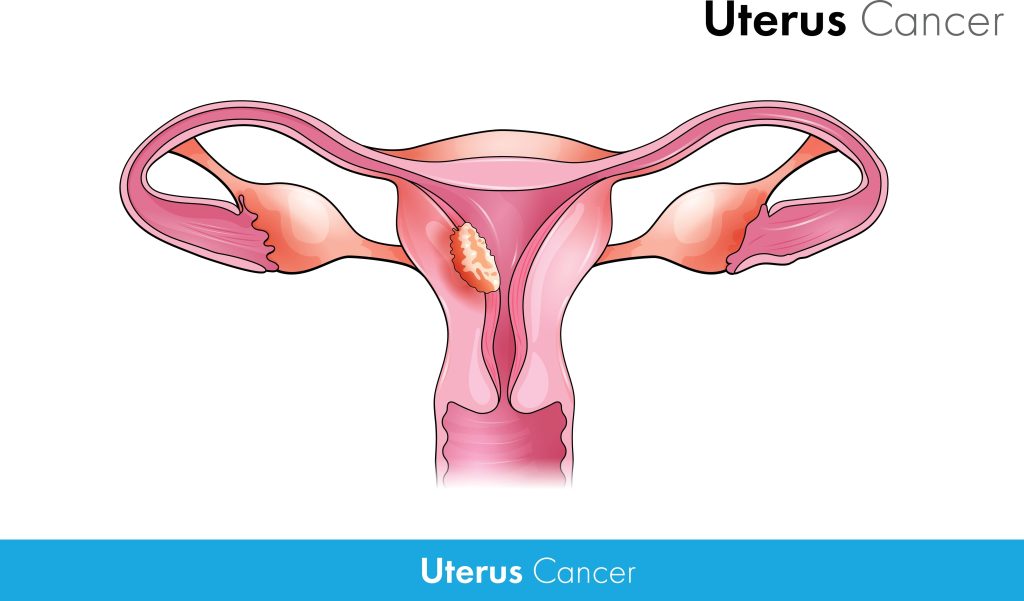Mark Kopec Now
Uterine Cancer
Understanding the Disease and Your Rights with Baltimore Uterine Cancer Lawyer Mark Kopec
Uterine cancer, also known as endometrial cancer, affects the lining of the uterus, a pear-shaped organ in the female reproductive system. The Kopec Law Firm provides this webpage to equip you with knowledge about uterine cancer, diagnosis, treatment options, and potential legal recourse in cases of medical malpractice. You may need Baltimore uterine cancer lawyer Mark Kopec at the Kopec Law Firm.
The Uterus: Anatomy and Function
The uterus, located in the lower abdomen between the bladder and rectum, plays a crucial role in reproduction. Specifically, here’s a breakdown of its key parts and functions:
- Endometrium: This is the inner lining of the uterus, rich in blood vessels and glands. It thickens each month in preparation for pregnancy and sheds during menstruation if no pregnancy occurs.
- Myometrium: The middle muscular wall of the uterus allows for contraction and expulsion during childbirth.
- Cervix: The lower, narrow neck-like portion of the uterus connects it to the vagina.
Symptoms of Uterine Cancer
Uterine cancer often presents with abnormal vaginal bleeding, especially:
- Bleeding between periods or after menopause
- Heavier or prolonged periods
Other potential symptoms also include:
- Pelvic pain or cramping
- Pain during intercourse
- Vaginal discharge with an unusual odor

The Two Main Types:
- Endometrial Cancer: This is the most common type of uterine cancer, accounting for over 90% of cases. It develops in the endometrium, the lining of the uterus that thickens and sheds during menstruation. Endometrial cancer can have different subtypes, with some being more aggressive than others.
- Uterine Sarcoma: This is a much rarer form of uterine cancer, arising in the muscles or other supportive tissues of the uterus. Uterine sarcomas tend to be more aggressive than endometrial cancers and have a higher risk of spreading.
Endometrial Cancer Subtypes:
Within endometrial cancer, there are several subtypes categorized based on how the cells appear under a microscope. Here are some common ones:
- Endometroid Carcinoma: This is the most frequent subtype of endometrial cancer and often has a good prognosis.
- Serous Adenocarcinoma: This is a more aggressive type that’s more likely to spread beyond the uterus.
- Adenosquamous Carcinoma: This rare cancer has features of both endometrial adenocarcinoma and squamous cell carcinoma (from the outer uterine layer).
- Uterine Carcinosarcoma: This uncommon type combines features of endometrial cancer and sarcoma, making it a more aggressive cancer.
Doctors for Diagnosis and Tests
If you experience any of the above symptoms, then consult an OB-GYN (obstetrician-gynecologist) specializing in women’s health. They should conduct a pelvic exam to assess the uterus and cervix. Depending on the findings, further tests may be needed:
- Endometrial biopsy: A thin instrument removes a sample of the endometrium for microscopic analysis to detect cancerous cells.
- Transvaginal ultrasound: This painless procedure uses sound waves to create an image of the uterus and surrounding organs.
- Hysteroscopy: A thin, lighted scope is inserted through the vagina and cervix to view the inside of the uterus for abnormalities.
Doctors for Treatment and Treatment Options
Following diagnosis, you’ll likely be referred to a gynecological oncologist specializing in cancers of the female reproductive system. Treatment options depend on the stage and type of cancer. Here’s an overview:
- Surgery: This may involve a hysterectomy (removal of the uterus), with or without removal of the ovaries and fallopian tubes.
- Radiation therapy: High-energy rays target and destroy cancer cells.
- Chemotherapy: Powerful drugs kill cancer cells throughout the body.
- Hormone therapy: This may be used to prevent recurrence in certain cases by blocking hormones that fuel cancer growth.
Prognosis
The prognosis for uterine cancer is generally good when detected early. Early-stage cancers often have a high cure rate with treatment. However, delayed diagnosis can significantly worsen the prognosis.
Medical Malpractice Claims with Baltimore Uterine Cancer Lawyer Mark Kopec
In cases where a medical professional deviates from the accepted standard of care, leading to a delayed or missed diagnosis of uterine cancer, you may have grounds for a medical malpractice claim. Here are some scenarios:
- Failure to order appropriate tests: If a doctor dismisses your symptoms or fails to recommend necessary tests based on your risk factors and symptoms, it could be considered negligence.
- Misinterpreting test results: A missed or misdiagnosed cancer on a biopsy or imaging test due to a healthcare provider’s negligence can lead to delayed treatment.
- Surgical errors: During surgery, complications or errors can worsen your condition or limit treatment options.
Next Step: Call Baltimore Uterine Cancer Lawyer Mark Kopec
If you have concerns about uterine cancer, then consult a qualified healthcare provider. If you believe you may have been a victim of medical malpractice, then speak with a legal professional to understand your rights and options.
Visit the Kopec Law Firm free consultation page or video. Then contact us at 800-604-0704 to speak directly with Attorney Mark Kopec. He is a top-rated Baltimore medical malpractice lawyer. The Kopec Law Firm is in Baltimore and pursues cases throughout Maryland and Washington, D.C.





